Understanding Waterfowl: What's on the Menu?
A closer look at the feeding ecology of North America's waterfowl
A closer look at the feeding ecology of North America's waterfowl
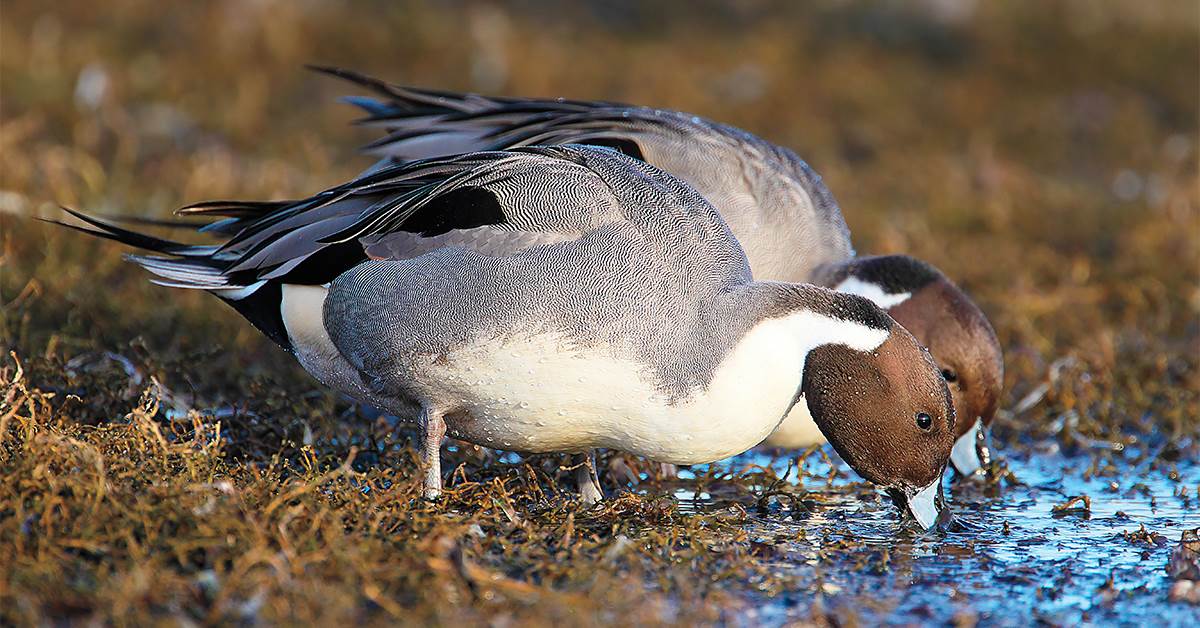
© garykramer.net
By J. Dale James, PhD
Waterfowl management is a mix of art and science designed to maintain waterfowl populations at desired levels by manipulating and maintaining habitats to support the birds' energetic needs throughout their life cycle. The basic ingredients for high-quality habitat include food, water, cover, and space. When provided in sufficient quantities on the landscape, these ingredients are a recipe for healthy populations of ducks, geese, and other wetland-dependent species.
From swans and geese to dabblers and divers, North America is home to 47 different species of waterfowl. Ensuring sufficient food resources for them is among the most important aspects of waterfowl management. This extremely diverse group of birds consumes a variety of aquatic and terrestrial foods, including submersed and emergent vegetation, seeds, grains, roots, tubers, invertebrates (such as insects, crustaceans, snails, and clams), and vertebrates (like fish, salamanders, and frogs).
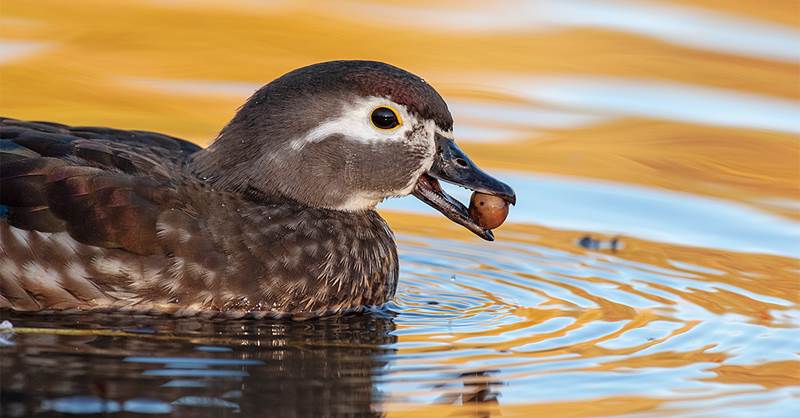
Photo © dougstimac.com
In general terms, feeding ecology refers to the relationship animals have with food resources, including physical adaptations and behaviors that help these animals acquire foods that meet their biological needs. North America's waterfowl have developed an array of unique physical characteristics that enable the birds to efficiently locate and eat certain foods. A phenomenon known as adaptive radiation allows numerous waterfowl species to coexist in the same wetlands without competing for similar food resources. For example, the trumpeter swan's long neck allows it to access food in deeper water than is possible for the short-necked American green-winged teal, which is limited to feeding in only a few inches of water.
The utensils waterfowl use to acquire food—their bills—are among the most well-studied feeding adaptations in birds. The mallard, which consumes a wide variety of foods, has a bill that is broad and relatively unspecialized compared to other ducks. In contrast, northern pintails and gadwalls have more specialized, slender bills designed for eating small seeds and strands of submersed aquatic vegetation. Of course, the northern shoveler may have the most specialized bill in the waterfowl world. Lined with comblike structures known as lamellae, the shoveler's large spatulate bill is perfectly equipped for filtering tiny invertebrates and crustaceans within the water column.
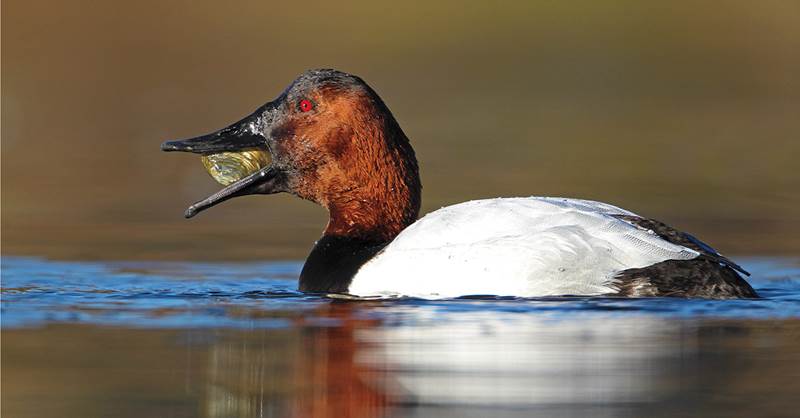
Photo © garykramer.net
Waterfowl feeding behavior includes all the methods by which ducks and geese acquire and use food resources for energy and nutrients. The birds' food requirements and feeding behaviors change throughout the year according to their biological needs. For example, female dabbling ducks increase their consumption of invertebrates during the breeding period to acquire the large quantities of protein and other nutrients required to produce eggs. After the breeding period and during migration, they switch to a more carbohydrate-rich diet of seeds and grains, which provide the energy needed to fuel the birds' long journeys north and south along the flyways.
Waterfowl distribution is strongly influenced by the quantity and quality of food resources on the landscape. Ducks and geese are hardwired to feed and acquire nutrients as efficiently as possible. Ice and snow cover, which reduces the availability of food in wetlands and agricultural fields, forces waterfowl to spend more time and energy foraging. As limited food resources become increasingly depleted over time, waterfowl feeding efficiency eventually declines to the point at which it is no longer energetically profitable. This is known as a foraging threshold. Under such conditions, even hardy waterfowl species such as mallards, American black ducks, and Canada geese are finally compelled to migrate in search of food.
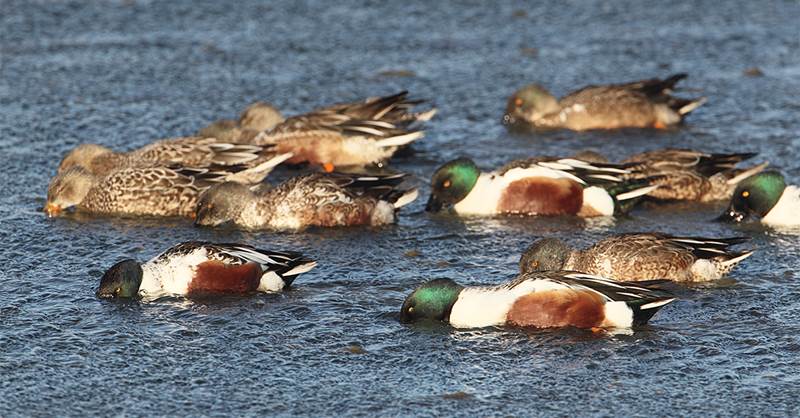
Photo © garykramer.net
Ducks and geese respond quickly to new food resources that emerge on the landscape. Heavy rainfall and backwater flooding can create thousands of acres of foraging habitat in agricultural fields and river bottoms overnight, and dabbling ducks flock to these areas to feed on waste grain, seeds, and invertebrates. For example, researchers studying northern pintails along the Louisiana coast discovered that the birds often fly north to the Mississippi Alluvial Valley (MAV) of north Louisiana and Arkansas when heavy rains create new feeding habitats in rice fields and seasonal wetland basins. These reverse migrations appear to be triggered by a sharp drop in barometric pressure, signaling the approach of weather systems that often produce heavy rainfall. Researchers observed that, in most cases, pintails migrated north on strong south winds flowing up from the Gulf toward approaching cold fronts. However, in some cases, the birds even fought a stiff north wind to reach potential new food resources in the MAV.
Ducks Unlimited's mission—to conserve habitat—may appear simple in purpose, but it's remarkably complex in practice, especially when you consider the breadth and scope of habitats required to fulfill the biological needs of migratory waterfowl across the continent. Add to the equation ongoing wetland and upland habitat losses and a changing climate, and the recipe for success gets even more complicated.
Along with its conservation partners, Ducks Unlimited is using the best available science to inform conservation programs such that high-priority habitats are restored, enhanced, or protected as efficiently as possible. These efforts to manage, protect, and restore waterfowl habitats in the right places help perpetuate our vision of skies filled with waterfowl today, tomorrow, and forever. Our work also provides people with clean and abundant water, flood mitigation, recreational opportunities, and numerous other ecosystem services. Clearly, conserving wetlands offers a high return on investment. Now, that's food for thought.
Dr. Dale James is the director of conservation science and planning in DU's Southern Region.
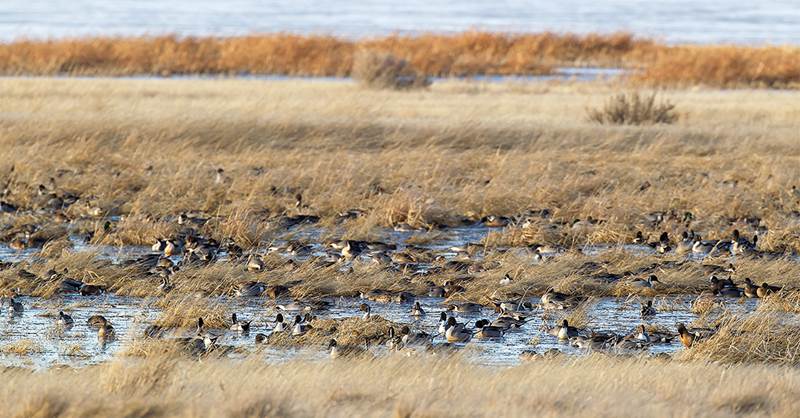
Photo © Scott Fink
Waterfowl researchers have developed models to measure the energetic demands and foraging habitat needs of waterfowl populations in key wintering and migration areas. These bioenergetic models evaluate the food resources found on various landscapes and compare their caloric value to the energy needed to support desired waterfowl populations. Ducks Unlimited and its partners use these models to establish habitat conservation goals and conservation delivery strategies in high-priority areas such as the Gulf Coast, Mississippi Alluvial Valley, and Central Valley of California. Given the potential of cross-seasonal effects or the carryover impacts that habitat conditions on wintering and staging areas may have on waterfowl when they arrive on the breeding grounds, conserving sufficient waterfowl foraging habitat on these landscapes is important to ensuring healthy populations of ducks and geese.

Photo © michaelfurtman.com
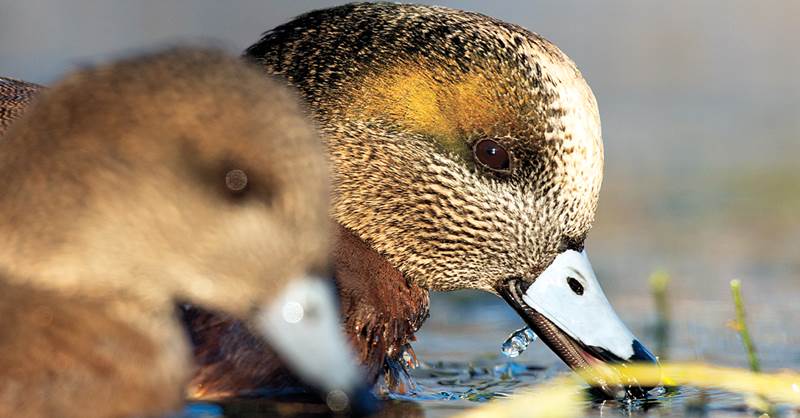
Photo © Steve Ohlenschlager
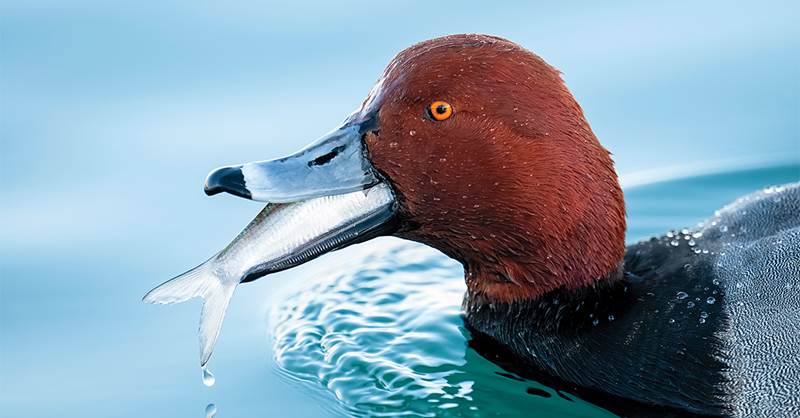
Photo © davidstimac.com
Ducks Unlimited uses cookies to enhance your browsing experience, optimize site functionality, analyze traffic, and deliver personalized advertising through third parties. By continuing to use this site, you agree to our use of cookies. View Privacy Policy